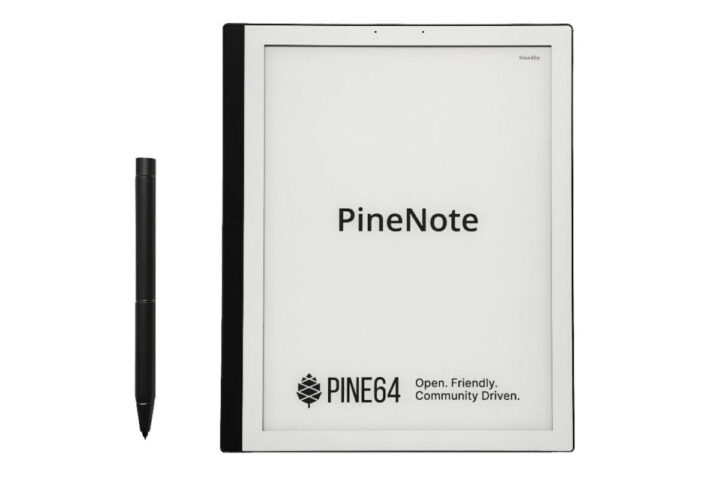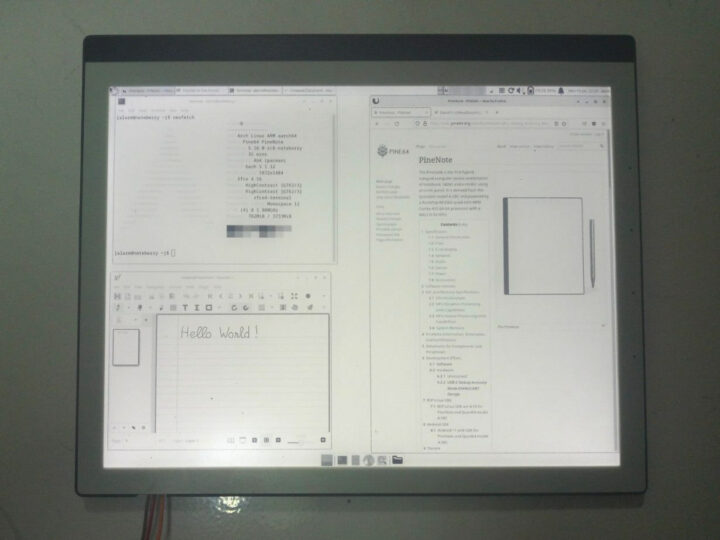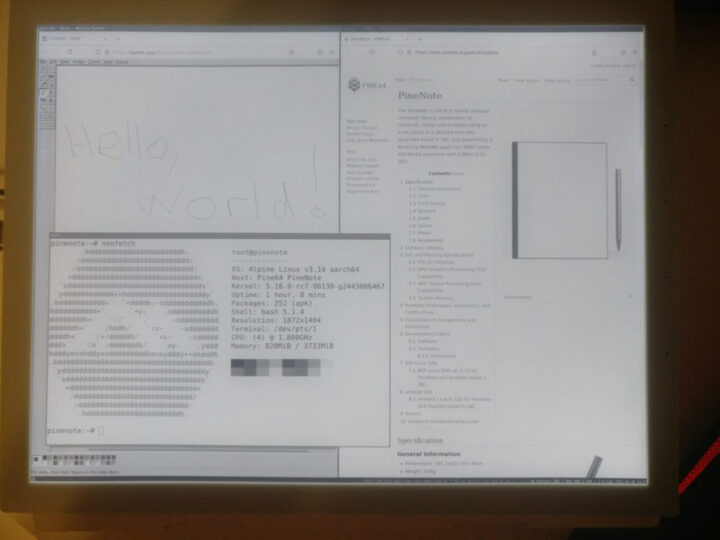Pine64 community has been on a tear in 2022, with the launch of the PineNote Developer Edition Linux e-reader following the availability of the PinePhone keyboard case and PinePhone Pro Explorer Edition Linux smartphone in the last 2-3 weeks.
So far a limited number of PineNote prototypes had been sent to developers, but it’s now possible to order the PineNote Developer Edition for $399 directly on the Pine64 store. As its name implies, the e-Reader is not ready for end-users, but recent progress with mainline Linux makes it suitable for developers and enthusiasts who want to play around with the device knowing much more work is needed to make it a usable device.
 The specifications remain the same as in the initial PineNote announcement:
The specifications remain the same as in the initial PineNote announcement:
- SoC – Rockchip RK3566 quad-core A55 processor @ 1.8 GHz with Arm Mali-G52 EE GPU, 0.8 TOPS NPU (AI accelerator)
- System Memory – 4GB of LPDDR4 RAM
- Storage – 128GB eMMC flash
- Display – 10.3-inch panel with 1404×1872 resolution (227 DPI), 16 levels of grayscale, front light with cool (white) to warm (amber) light adjustment, capacitive glass layer for finger touch-based input, scratch-resistant hardened glass, and a Wacom electromagnetic resonance layer (EMR) for EMR pen input (included).
- Audio – 4x microphones, stereo loudspeaker
- Connectivity – Dual-band 802.11b/g/n/ac WiFi 5, Bluetooth 5.0
- USB – 1x USB-C 2.0 host port for fast charging and data
- Sensor – G-Sensor for portrait and landscape sensing
- Battery – 4,000mAh/14.8Wh LiPi battery
- Power Supply – 5V/3A via USB-C port with USB PD support (15W)
- Dimensions – 191.1 x 232.5 x 7.4mm
- Weight – 438 grams
- Materials – magnesium alloy inner frame, plastic back cover
The PineNote Developer Edition ships with a USB-A to USB-C charging cable, Quick Start User Manual, an EMR Pen, and a protective cover.
The developer edition only ships with a bootloader, no operating system, so you’d have to install, or even build, your own. The photo above shows the PineNote running Alpine Linux v3.14 with Linux 5.16-rc7 (mainline), and a functioning DRM (Direct Rendering Manager) driver for the device’s e-ink controller and panel. It’s still an early version that uses the basic grayscale waveform, and support for optimized anti-ghosting waveforms, the fast monochrome waveform used for low-latency pen input, and the dithering waveform needed to watch videos is coming later on.
Still, this should allow developed to optimize programs for E-ink displays with notably the removal of animations, maximizing contrast, and checking whether the information conveyed through colors is still usable on a grayscale display


Jean-Luc started CNX Software in 2010 as a part-time endeavor, before quitting his job as a software engineering manager, and starting to write daily news, and reviews full time later in 2011.
Support CNX Software! Donate via cryptocurrencies, become a Patron on Patreon, or purchase goods on Amazon or Aliexpress





